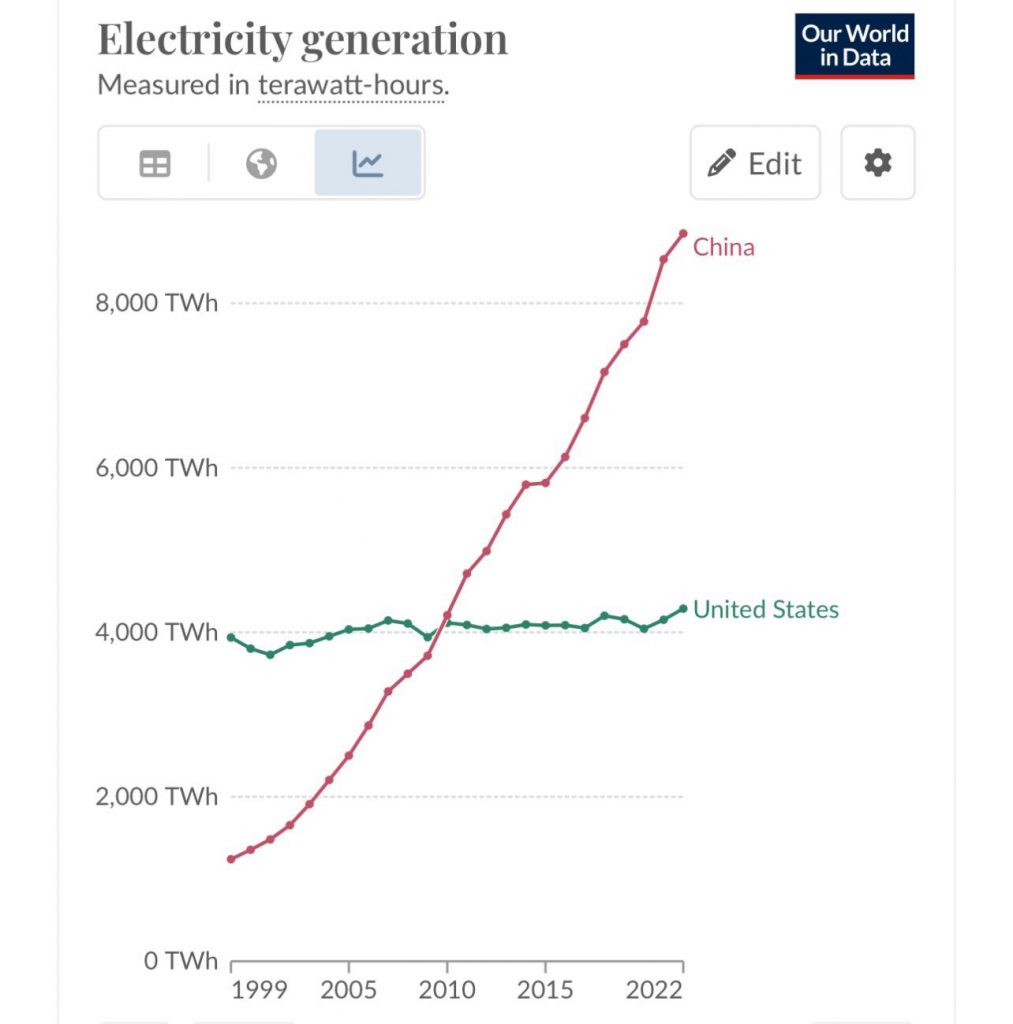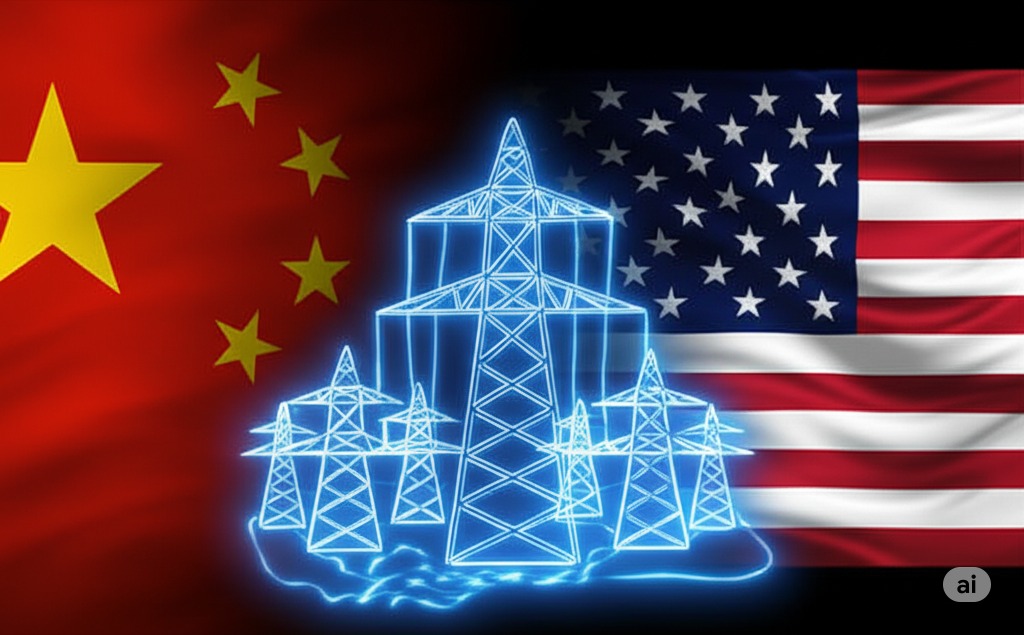A surge in China’s electricity generation, juxtaposed with relatively flat U.S. output, could become a critical factor in the global artificial intelligence race. As AI systems grow in complexity and scale, their voracious appetite for power is set to make energy a key strategic asset.
The landscape of global electricity generation has shifted dramatically over the past two decades. Data from Our World in Data illustrates a stark divergence: while U.S. electricity generation has remained relatively stable, hovering around 4,000 terawatt-hours (TWh) annually since the late 1990s, China’s output has skyrocketed. Starting from a base lower than the U.S. in 1999, China’s electricity generation has surged, exceeding 8,000 TWh in recent years, effectively doubling the U.S. output.

This growing energy disparity is not just an infrastructure story; it has profound implications for the future of artificial intelligence. Large AI models, the engines of modern AI advancements, are incredibly power-intensive. Training these models requires vast computational resources, housed in sprawling data centers that consume megawatts of electricity. As these models become more sophisticated and are deployed across various sectors – from autonomous driving to drug discovery and advanced manufacturing – their energy demands are only set to escalate.
The sheer scale of future AI’s energy needs has been highlighted by prominent tech figures. Former Google CEO Eric Schmidt, for instance, has posited a future where AI could potentially consume an astonishing 99% of the world’s electricity. While this figure represents an extreme scenario, it underscores the critical link between energy availability and AI supremacy. The nation that can provide abundant, reliable, and cost-effective electricity will possess a significant advantage in developing and deploying cutting-edge AI.
China appears to be strategically positioning itself to meet these future energy demands. The nation is in the midst of an unprecedented expansion of its nuclear power capacity, with numerous reactors under construction. This push for nuclear energy, a consistent and low-carbon power source, is complemented by massive investments in renewable energy technologies, particularly solar and wind power. China is already a global leader in renewable energy deployment, and its ambitions in this sphere continue to grow.
This concerted effort to bolster its electricity generation capacity, from diverse and increasingly sustainable sources, could provide China with a crucial edge in the AI race. Access to more electricity translates directly into the ability to power more data centers, train larger and more complex AI models, and support the widespread industrial adoption of AI technologies.
While the U.S. remains a formidable force in AI research and development, its relatively stagnant electricity generation growth could become a bottleneck. Ensuring a plentiful and resilient energy supply will be paramount for the U.S. to maintain its competitive edge in an increasingly power-hungry technological future.
The AI race is multifaceted, hinging on talent, investment, data, and algorithmic innovation. However, the foundational requirement of energy cannot be overlooked. As China rapidly expands its electricity generation, it is not just building power plants; it is laying the groundwork for a future where it could potentially dominate the next frontier of technological advancement. For businesses and policymakers in the U.S. and beyond, understanding this energy dimension is critical to navigating the evolving landscape of global technological competition.
